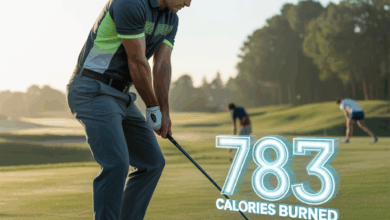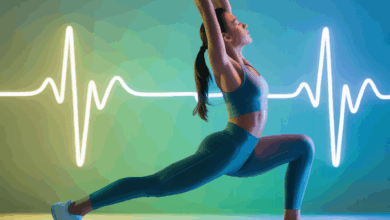How Many Calories Do Calf Raises Burn? A Practical Guide with Estimates & Tips

Have you ever stood at the bus stop or in your kitchen doing calf raises to pass the time and wondered, “Am I even burning any real calories?” If you’re counting every calorie or trying to make time-efficient workout choices, that tiny question matters. In this article we’ll answer the core question—how many calories do calf raises burn—walk through realistic calorie estimates, show you useful workout variations, and share practical tips to get more metabolic value from your calf work.
Quick answer: calories burned by calf raises (short overview)
Calf raises are a strength exercise, so they burn fewer calories per minute than steady-state cardio but more than sitting. A general estimate: light, unweighted calf raises burn about 3–5 calories per minute for an average adult. When you add weight, increase tempo, or use plyometric variations, that number can rise to 6–10+ calories per minute depending on body weight and intensity.
How many calories do calf raises burn? — the detail
Calories burned during calf raises depend on several factors:
- Body weight — heavier people burn more calories for the same movement.
- Intensity and load — adding dumbbells or a barbell raises calorie burn.
- Volume and rest periods — longer sets with minimal rest increase total expenditure.
- Type of calf raise — standing vs. seated vs. plyometric yields different metabolic costs.
Simple calorie estimates (real-world examples)
Using common metabolic equivalents (METs) for resistance training, here are practical examples:
- Moderate, unweighted calf raises (3.5 METs): a 150 lb (68 kg) person burns ~4–5 kcal/min. Ten minutes equals ~40–50 kcal.
- Weighted calf raises or higher effort (5 METs): a 180 lb (82 kg) person burns ~7–8 kcal/min. Ten minutes equals ~70–80 kcal.
- Plyometric calf jumps or fast single-leg reps (6–8 METs): intense short bursts can reach 8–10+ kcal/min for some people.
These are estimates. A typical 3–4 set calf session totaling 10–15 minutes of active reps will often burn 40–120 calories depending on the variables above.
Why the calorie numbers are smaller than running or cycling
Calf raises isolate a small muscle group. Cardio like running or cycling recruits larger muscle masses (quads, glutes) continuously, so those activities burn more calories per minute. That doesn’t mean calf raises are unimportant—building muscle improves resting metabolic rate and strengthens structures crucial for walking, jumping, and injury prevention.
Workout variations to maximize calorie burn and calf development
Mixing variations keeps workouts effective and raises calorie expenditure. Try these:
- Standing calf raises (both feet): great for heavy loading with dumbbells or a barbell.
- Single-leg calf raises: increases intensity and balance demands — fewer reps, higher metabolic cost per rep.
- Seated calf raises: targets soleus muscle; useful for balanced development.
- Plyometric calf jumps and rebound hops: high-intensity, great for power and extra calorie burn.
- Slow tempo with pause at peak: increases time under tension and metabolic stress.
Sample calf-focused mini-workout (10–12 minutes)
- Warm-up: ankle circles, 1–2 minutes of marching in place.
- 3 sets single-leg calf raises — 10–12 reps each leg, 30s rest.
- 2 sets seated calf raises — 15 reps, 20s rest.
- 2 sets plyometric calf jumps — 20 seconds on, 40 seconds off.
This short routine balances strength and intensity to increase calorie burn beyond a basic set of calf raises.
How to track and improve your calf-raise calorie burn
Practical tips:
- Use a heart-rate monitor or fitness watch — resistance training calories are rough estimates, but tracking trends helps.
- Add weight progressively — muscle growth increases long-term calorie burn.
- Superset calves with compound lower-body moves (e.g., squats) to recruit more muscle and increase session-wide calorie expenditure.
- Keep rest periods purposeful and slightly shorter to raise metabolic demand.
Nutrition and lifestyle advice to support results
To make calf training translate into fat loss or definition, pair it with good nutrition and recovery:
- Track calories or follow a sensible calorie deficit if fat loss is the goal.
- Prioritize protein (0.7–1.0 g/lb body weight) to support muscle repair and growth.
- Sleep 7–9 hours and manage stress — both affect recovery and metabolic efficiency.
- Stay active during the day (NEAT) — walking and standing multiply the effects of gym work.
Real-world examples that readers can relate to
Case 1: Sarah, a busy teacher — she does calf raises in the classroom while grading papers (3 sets of single-leg raises during a 15-minute break). Over weeks she noticed improved calf endurance and modest calorie burn that supported her daily step routine.
Case 2: Marcus, a recreational runner — he added 2 weekly weighted calf sessions. His runs felt springier and he experienced fewer calf cramps, plus a small increase in weekly calorie burn from resistance training.
Frequently Asked Questions
Per-hour estimates are misleading for small isolated exercises because you rarely perform nonstop calf raises for an hour. If you did moderate, continuous calf raises (unlikely), expect ~180–300 kcal/hour depending on weight and intensity. A realistic 10–20 minute focused calf session typically burns 40–150 kcal.
Spot reduction is a myth. Calf raises will strengthen and build calf muscles, and may improve shape and tone. Fat loss happens with overall calorie deficit and full-body training combined with proper nutrition.
Calf raises are a valuable component, especially weighted and single-leg variations. For running-specific strength, combine calf raises with plyometrics, eccentric loading, and functional exercises that mimic force patterns in running.
Conclusion — How many calories do calf raises burn and should you do them?
Calf raises burn a modest number of calories compared with big compound or cardio movements, but they deliver important strength, injury-prevention, and aesthetic benefits. Depending on body weight, intensity, and variation, expect roughly 3–10+ calories per minute. For best results, combine progressive calf training with compound legs, cardio, good nutrition, and daily activity levels.
If you want structured ways to include calf work in your weekly plan, check out our workout routines. For guidance on fueling performance and recovery, see our nutrition guides. And for simple daily habits that increase calorie burn and recovery, read more of our wellness tips.
Ready to build stronger, more resilient calves? Try the mini-workout above this week and track how you feel — then adjust load and tempo to keep progressing. Share your results or questions below!





